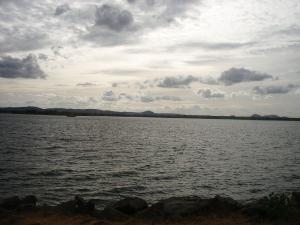House of Vijayabahu | Polonnaruwa - (1153 - 1186)

ක්රි.ව. 1153 – 1186 අතර කාලයේ පොලොන්නරුව රාජධානියේ රජ වූ මහා පරාක්රමබාහු රජතුමා කරවූ ජේතවනාරාම සංකීර්ණයේ විහාර ගෙය තිවංක පිළිම ගෙයයි. මෙය උතුරු වෙහෙර ලෙසද හඳුන්වා ඇත. පොළොන්නරුවේ... 
Built : King Parakramabahu I,
Reconstruction : King Parakkamabahu II,

Parākramabāhu I (Pali Mahā Parākaramabāhu 1123–1186) was king of the Kingdom of Polonnaruwa from 1153-86. During his reign from the capital city of Polonnaruwa, he unified the three lesser kingdoms of the island, becoming one of the last monarchs in Sri Lankan history to do so. He oversaw the expansion and beautification of his capital, constructed extensive irrigation systems, reorganized the country's army, reformed Buddhist practices, encouraged the arts and undertook... 
Built : King Parakramabahu I,

The Polonnaruwa Vatadage is an ancient structure dating back to the Kingdom of Polonnaruwa of Sri Lanka. It is believed to have been built during the reign of Parakramabahu I to hold the Relic of the tooth of the Buddha or during the reign of Nissanka Malla of Polonnaruwa to hold the alms bowl used by the Buddha. Both these venerated relics would have given the structure a great significance and importance at the time. Located within the ancient city of Polonnaruwa, it is the best... 
Built : King Parakramabahu I,

Parakrama Samudra (or King Parakrama's sea or the Sea of King Parakrama) is a shallow reservoir, consisting of five separate reservoirs(thopa, dumbutulu, erabadu,boo, katu tanks) connected by narrow channels in Polonnaruwa, Sri Lanka.
The northernmost reservoir is the oldest and referred to as Topa wewa (Sinhalese wewa = lake or reservoir) built around 386 AD. The middle section Eramudu wewa and the southernmost portion, at the highest elevation, is Dumbutula... 
Built : King Parakramabahu I,